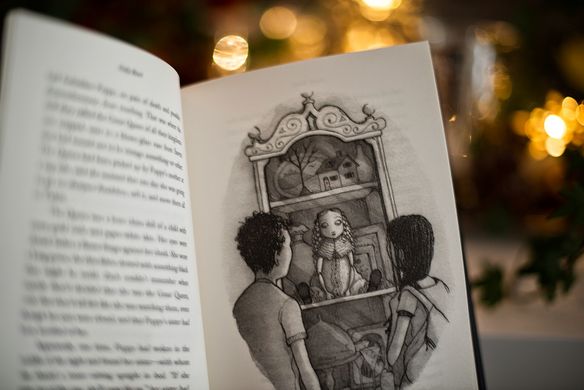Sprites who obsesses over honey and faerie princes who revel in pain are just the start of Holly Black’s beautiful mind and world. To call her career thus far prolific does not even begin to cover the expanse of her work.
Black was born in 1971 in West Long Branch, New Jersey, and grew up in a self-described “decrepit Victorian house.” That house seemed to have given her the spark of inspiration as a child, because she entered adulthood with the literary vision to create fantastical realms. She later earned a bachelor’s degree in English from The College of New Jersey and afterward gave into the pull to become a writer.
Black’s first book, “Tithe: A Modern Faerie Tale,” debuted in 2002 and was published by Simon and Schuster, soon followed by “Valiant” and “Ironside.” The original story surrounds the adventures of 16-year-old Kaye Fierch. As most of Black’s books do, this urban fantasy combines the modern world with faerie lore.
Kaye tours the country with her mother’s rock band until one day her mother’s boyfriend, under the influence of an Unseelie (a type of faerie), tries to stab Kaye’s mother. Kaye and her mother return to Kaye’s grandmother’s house, where Kaye begins to remember conversations with her old imaginary friends. But they were not imaginary. “Tithe” delves into the worlds of Seelie and Unseelie faeries, their politics and the nature of the relationship between the two worlds.
https://www.instagram.com/p/Bu2QH8bAoVE/
In 2003, the author began the series “The Spiderwick Chronicles,” which possibly made her name synonymous with “faeries.” The first book in the series, “The Field Guide,” opens in Maine with the Grace siblings, 9-year-old twins Jared and Simon and their 13-year-old sister Mallory. The siblings and their mother, Helen, move into the Spiderwick estate, a house reminiscent of Black’s own childhood “decrepit Victorian house.” With an abundance of hidden corners and nooks taking up its space, the house speaks to any child who imagined that their house might hold unknown wonders.
The Spiderwick estate actually has a secret library within its walls that the children find on their first night. The book’s protagonists then come across a brownie, a spirit that helps with household chores, named Thimbletack, living inside the house’s walls. The first book ends with the three siblings finding the actual field guide left by Arthur Spiderwick.
The story continues on with “The Seeing Stone,” “Lucinda’s Secret,” “The Ironwood Tree” and “The Wrath of Mulgarath.” That is presumably the end of the Grace children’s adventures, but the world of Spiderwick continues on with “The Nixie’s Song,” “A Giant Problem” and the “Wyrm King.” The incredible number of books accompanies a copious amount of companion art and a 2008 film adaption.
Black began another series, “The Curse Worker’s” trilogy, in 2008, which provides a break from all the faeries and fantasy, but still includes magic. In 2015, Black wrote “The Darkest Part of the Forest.” This stand-alone novel features characters from the “Modern Tale of Faerie” series, but mostly follows siblings Hazel and Ben through their lives in a town that fully accepts the interaction of magical creatures and humans. This world becomes more detailed and expansive with Black’s latest series of novels, “The Folk of the Air.” The first novel in the series, “The Cruel Prince,” focuses on Jude Duarte, a human living in the world of faeries. She is despised for being a human and, consequently, despises most faeries.
She has a valid reason for this loathing because her adoptive father, Madoc, only adopted her after hunting down and killing her mother and father. Jude’s mother was married to Madoc first and had one child with him before running away with another human back to the modern world, where she gave birth to Jude and her identical twin, Taryn (Black appears to have a pension for writing about twins). Thus, Jude has a right to be resentful.
https://www.instagram.com/p/BuHNhT8AKos/
Jude grows up in a world full of tricks and deceit, glamours and poisons, all while being constantly reminded that she is a lesser species. Thrown into a space of courts and royalty from a young age, she learns to live by the rules set before her. However, she is not satisfied and refuses to bow down to any preconceived notions of how she should behave as a human, breaking the boundaries dictated to her.
Black’s cultivated works build and build upon one another, continuing to grow complicated and rich as the author grows alongside them. Using traditional folklore and some of her own making, she fuses the mundane with the magical and fantastical. I encourage you to dive in and begin your journey into the intricate world of Holly Black.











